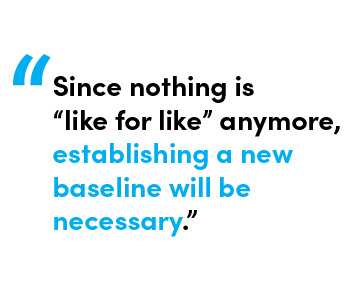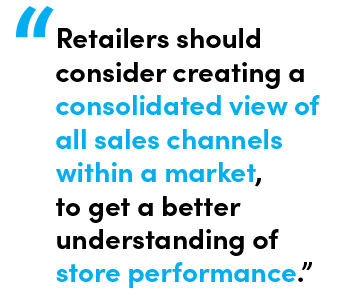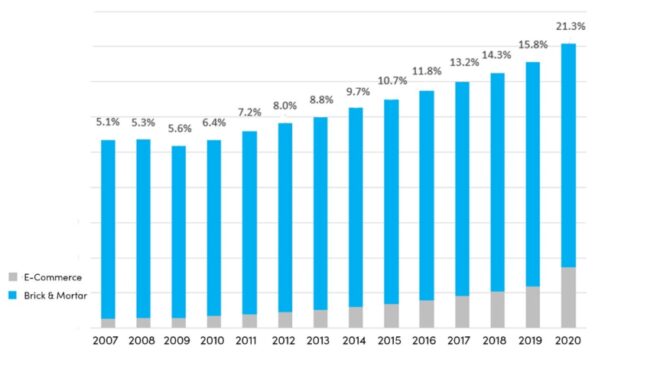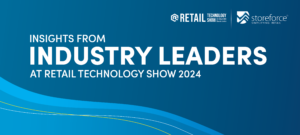Blog Post
To Comp or Not To Comp?
February 16, 2021 in COVID-19, Performance Management, Thought Leadership

2020 was unprecedented in every way. For retailers, it changed the way they do business. Traditionally, measuring the performance of stores has been done by looking at Comparable Store Sales. Comparable Sales or Comp Sales (or Like for Like) compares current year actual results to the results of the same time periods in the previous year. 2020 was anything but Like for Like.
In March of 2021, the world will “Comp” Covid-19. What does this mean for your stores and your organization? Starting in March, all of your historical data will become less valuable to use as a comparative. How do you compare against not being open, or against being open on reduced hours or with capacity limits?

Some might say that the easiest thing to do would be to compare 2021 to the last “normal” year, being 2019; however, it is not that simple. There are the obvious differences to 2020, such as stores closures, shortened store hours, and in-store capacity limits. What is more significant is that 2020 brought on huge changes in customer behavior. We need to consider the impact of these changes when determining how to measure performance going forward.
Customer behaviors learned over the course of 2020 are here to stay. Services that were ‘occasional’ in 2019 like BOPIS, curbside pickup and same day shipping have become standard practices, and are now expected offerings in the eyes of the customer. The magnitude of the changes we’ve seen in customer behavior, as well as the speed at which they have adopted these new services, are more significant than any other year that retailers have experienced in recent history.
While these changes in customer behavior won’t limit a retailer’s ability to achieve 2019 sales volumes, they will have a significant impact on 4-wall performance. This is especially true regarding ratio metrics such as Average Transaction, Conversion and Visit Value. Since nothing is “like for like” anymore, establishing a new baseline on how to measure store performance will be essential to measuring and motivating your store and field staff.
Is Comp still King? It’s Time to Establish a New Baseline
1. Reorganizing Your Financial Plan
Your financial plan is still the foundation, though the sales distribution across channels will change. This change will need to be considered as product is planned for the stores in 2021. We’ve learned from the customer that the full size / color assortment does not need to be physically in the store, as they are now more comfortable with digital purchases. This, in turn, changes your in-store tasks and activities, further diminishing the relevance of 2019 as a useful benchmark.
2. Unified Commerce: Combining Online and Offline Sales

Retailers should consider creating a consolidated view of all sales channels within a market, to get a better understanding of store performance. With all the new digital activities available in the last year (click and collect, endless aisle, curbside pickup, etc.), it is essential to combine all local demand generation and order fulfillment activities. This will give a more complete picture of what the store influences. This will give retailers a more accurate view of sales within a market area and allow you to better recognize and reward performance.
3. Using Trend to Set Targets on Operational Metrics
Given the limited value of Comp metrics, how should a Retailer go about setting targets in 2021? While year on year changes in weekly Market Sales is an interesting financial metric, it will do little to drive insights and performance within your Store organization. For that, Retailers will need to focus on the trends of key ratio metrics such as Average Basket, Conversion and Visit Value. Adopting a strategy of improving on last week’s results will both ground the targets in ‘what is possible’, as well as give your Stores a meaningful target to strive for.
4. Understanding the Shift
Many retailers had to accelerate their omni-channel strategy over the last year to keep up with the changing customer behavior. What retailers had planned to execute over the next 3 to 5 years was achieved in as little as 9 months. Looking at ecommerce sales as % of total retail sales over last the 14 years, we can see it took 10 years for penetration rates to double, whereas we saw a 40% increase in 2020 alone.
US Brick and Mortar & Ecommerce Sales
14 Year Comparison

Source: Digital Commerce 360, 2021.
In summary, 2020 has prompted significant and permanent changes in Customer behavior and has brought many ‘novel’ service strategies to the forefront. And yet, with all this change, Retail remains a simple business that focuses on the customer experience and is driven by metrics. The coming year will present a unique opportunity for Retailers to establish a new baseline from which to set goals and measure performance in the future.
StoreForce can help you to achieve your retail goals and labor planning effectiveness. Interested in learning more? Contact us and engage with one of our retail experts as to how we can future proof your overall retail store management.
Author:

Chris Matichuk leads the Services and Product teams as the General Manager of StoreForce. With over 30 years in retail, Chris has a vast experience in retail consulting and retail systems. Chris has worked closely with 100+ retailers spanning nearly all formats of retail. She has held positions from field organization to corporate operations in department stores, big-box retail, and Specialty Retail.

Recent Blog Posts

Insights from Industry Leaders at Retail Technology Show 2024
The Customer Experience Drives UK Retailers! There was a buzz in the air last week in London Retail Technology Show 2024 was crackin' with retailers looking for new solutions and...
READ MORE
The Top 7 Questions Asked at the Fabletics Road Show
The StoreForce Road Show was a fantastic event, bringing together retailers from all over Los Angeles County for breakfast and a lively discussion session with Fabletics’ Senior Director of Retail...
READ MORE
Future Stores 2024: Key Takeaways from StoreForce
Future Stores 2024 was an incredible event for brick-and-mortar retail, bringing together industry leaders to discuss and explore the latest trends and innovations As a participant, StoreForce...
READ MORESchedule a Consultation With Our Retail Experts Today
Contact us today for a 15-minute conversation on how StoreForce can help you drive store performance and execution for less than the cost of 1 transaction per week. Learn how retailers all over the world are driving performance and customer experience through our solution made exclusively for Specialty Retail.